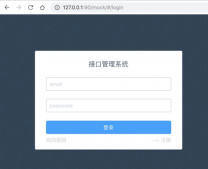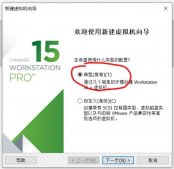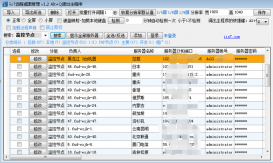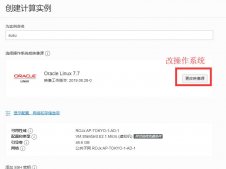查看Docker信息(version、info)
|
1
2
3
4
5
|
# 查看docker版本$docker version# 显示docker系统的信息$docker info |
对image的操作(search、pull、images、rmi、history)
|
1
2
3
4
5
6
7
8
9
10
11
12
13
14
|
# 检索image$docker search image_name# 下载image$docker pull image_name# 列出镜像列表; -a, --all=false Show all images; --no-trunc=false Don't truncate output; -q, --quiet=false Only show numeric IDs$docker images# 删除一个或者多个镜像; -f, --force=false Force; --no-prune=false Do not delete untagged parents$docker rmi image_name# 显示一个镜像的历史; --no-trunc=false Don't truncate output; -q, --quiet=false Only show numeric IDs$docker history image_name |
启动容器(run)
docker容器可以理解为在沙盒中运行的进程。这个沙盒包含了该进程运行所必须的资源,包括文件系统、系统类库、shell 环境等等。但这个沙盒默认是不会运行任何程序的。你需要在沙盒中运行一个进程来启动某一个容器。这个进程是该容器的唯一进程,所以当该进程结束的时候,容器也会完全的停止。
|
1
2
3
4
5
6
7
8
9
|
# 在容器中运行"echo"命令,输出"hello word"$docker run image_name echo "hello word"# 交互式进入容器中$docker run -i -t image_name /bin/bash# 在容器中安装新的程序$docker run image_name apt-get install -y app_name |
Note: 在执行apt-get 命令的时候,要带上-y参数。如果不指定-y参数的话,apt-get命令会进入交互模式,需要用户输入命令来进行确认,但在docker环境中是无法响应这种交互的。apt-get 命令执行完毕之后,容器就会停止,但对容器的改动不会丢失。
查看容器(ps)
|
1
2
3
4
5
6
|
# 列出当前所有正在运行的container$docker ps# 列出所有的container$docker ps -a# 列出最近一次启动的container$docker ps -l |
保存对容器的修改(commit)
当你对某一个容器做了修改之后(通过在容器中运行某一个命令),可以把对容器的修改保存下来,这样下次可以从保存后的最新状态运行该容器。
|
1
2
|
# 保存对容器的修改; -a, --author="" Author; -m, --message="" Commit message$docker commit ID new_image_name |
Note: image相当于类,Container相当于实例,不过可以动态给实例安装新软件,然后把这个container用commit命令固化成一个image。
对容器的操作(rm、stop、start、kill、logs、diff、top、cp、restart、attach)
|
1
2
3
4
5
6
7
8
9
10
11
12
13
14
15
16
17
18
19
20
21
22
23
24
25
26
27
28
29
|
# 删除所有容器$docker rm `docker ps -a -q`# 删除单个容器; -f, --force=false; -l, --link=false Remove the specified link and not the underlying container; -v, --volumes=false Remove the volumes associated to the container$docker rm Name/ID# 停止、启动、杀死一个容器$docker stop Name/ID$docker start Name/ID$docker kill Name/ID# 从一个容器中取日志; -f, --follow=false Follow log output; -t, --timestamps=false Show timestamps$docker logs Name/ID# 列出一个容器里面被改变的文件或者目录,list列表会显示出三种事件,A 增加的,D 删除的,C 被改变的$docker diff Name/ID# 显示一个运行的容器里面的进程信息$docker top Name/ID# 从容器里面拷贝文件/目录到本地一个路径$docker cp Name:/container_path to_path$docker cp ID:/container_path to_path# 重启一个正在运行的容器; -t, --time=10 Number of seconds to try to stop for before killing the container, Default=10$docker restart Name/ID# 附加到一个运行的容器上面; --no-stdin=false Do not attach stdin; --sig-proxy=true Proxify all received signal to the process$docker attach ID |
Note: attach命令允许你查看或者影响一个运行的容器。你可以在同一时间attach同一个容器。你也可以从一个容器中脱离出来,是从CTRL-C。
保存和加载镜像(save、load)
当需要把一台机器上的镜像迁移到另一台机器的时候,需要保存镜像与加载镜像。
|
1
2
3
4
5
6
7
8
9
|
# 保存镜像到一个tar包; -o, --output="" Write to an file$docker save image_name -o file_path# 加载一个tar包格式的镜像; -i, --input="" Read from a tar archive file$docker load -i file_path# 机器a$docker save image_name > /home/save.tar# 使用scp将save.tar拷到机器b上,然后:$docker load < /home/save.tar |
登录registry server(login)
|
1
2
|
# 登陆registry server; -e, --email="" Email; -p, --password="" Password; -u, --username="" Username$docker login |
发布image(push)
|
1
2
|
# 发布docker镜像$docker push new_image_name |
根据Dockerfile 构建出一个容器
|
1
2
3
4
5
6
|
#build --no-cache=false Do not use cache when building the image -q, --quiet=false Suppress the verbose output generated by the containers --rm=true Remove intermediate containers after a successful build -t, --tag="" Repository name (and optionally a tag) to be applied to the resulting image in case of success$docker build -t image_name Dockerfile_path |
感谢阅读,希望能帮助到大家,谢谢大家对本站的支持!
原文链接:http://blog.csdn.net/enterys/article/details/69568845


















